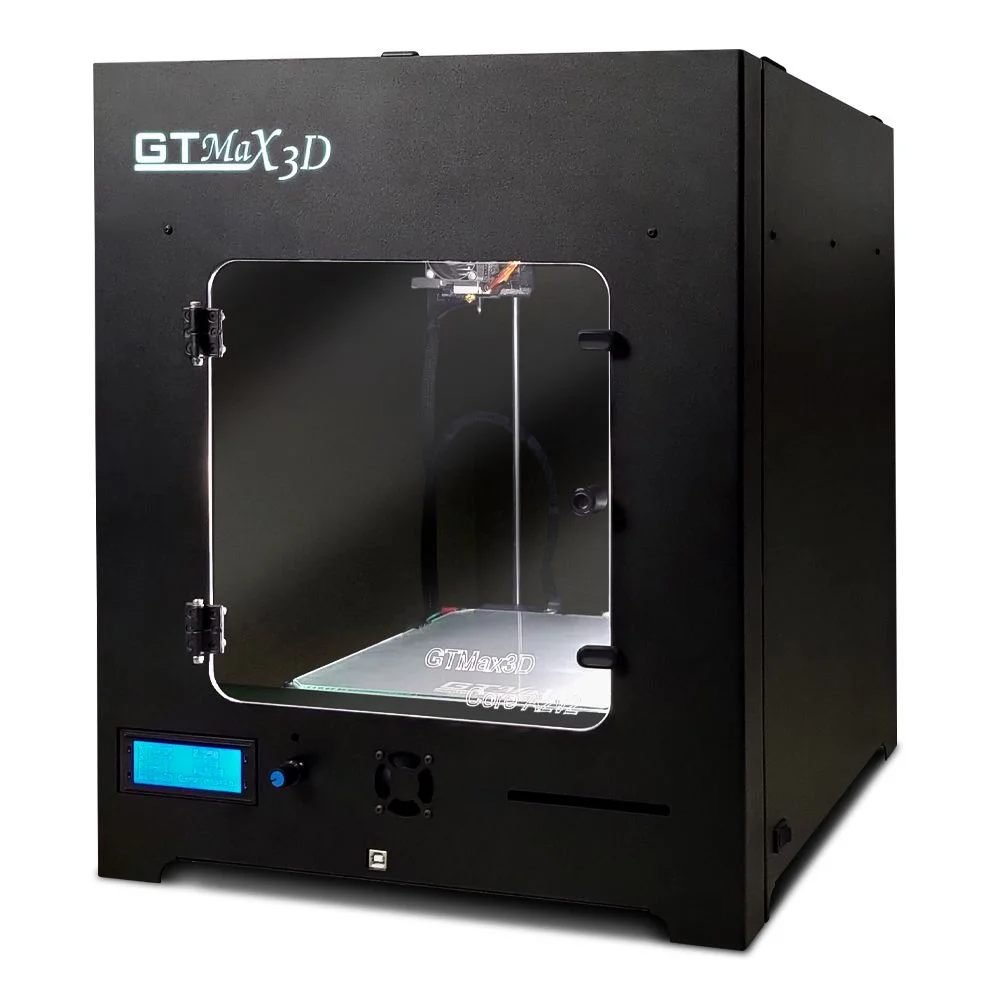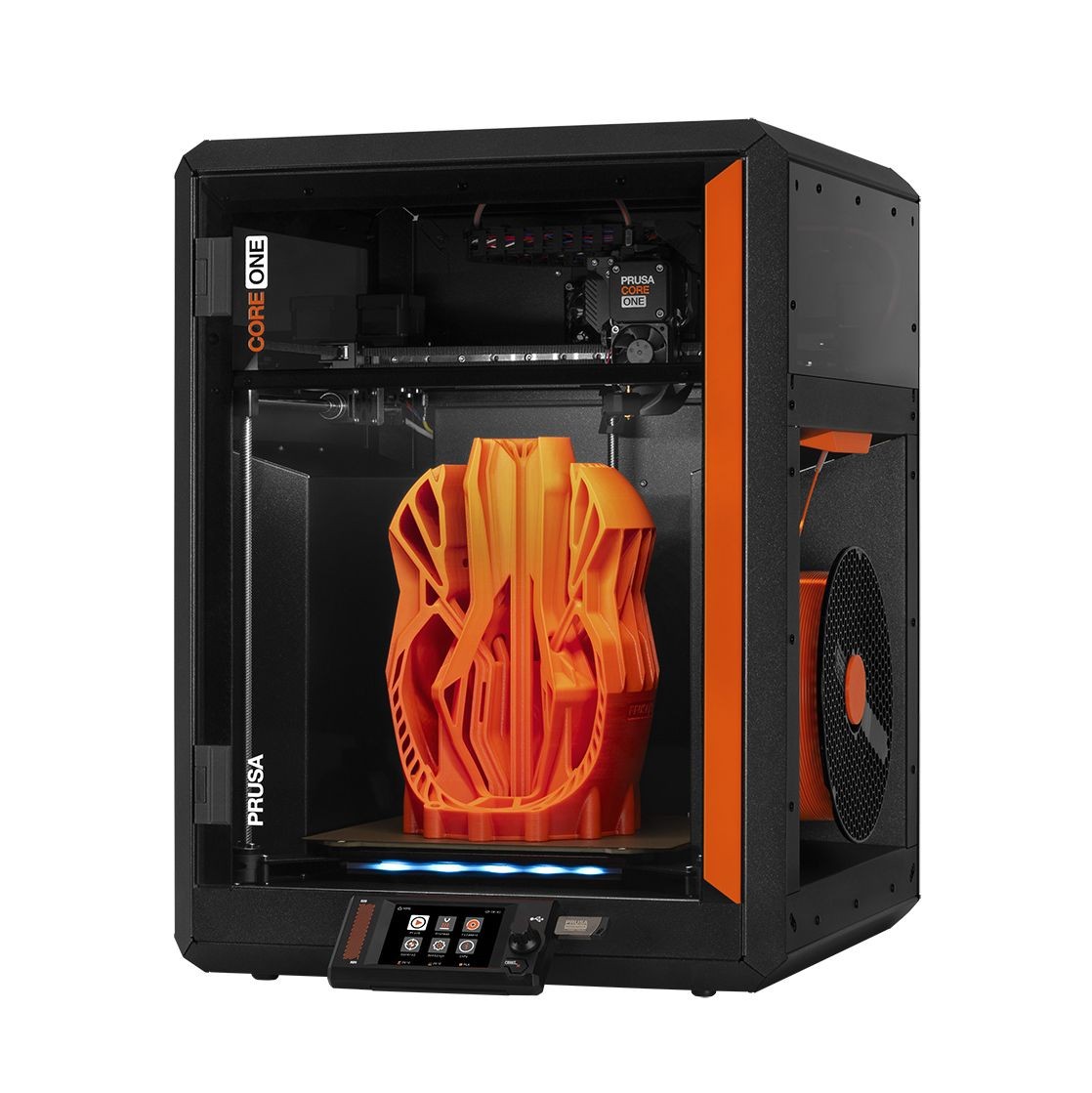Compare Core A2V2 vs Core One
Comparison between the best 3D printers
Choose the best 3D printer at the best price. The cheapest 3D printers are here.
Buy a 3D printer here with 3D Fila.
 |
 |
|
| Model | Core A2V2 |
Core One |
| Printing Material | Filament | Filament |
| Buy Filament for GTMax Core A2V2 | Buy Filament forPrusa Core One | |
| Estimated price | $684,00 | $1200,00 |
| Manufacturer | GTMax | Prusa |
| Release Year | 2019 | 2025 |
| Print Volume [mm] | 220x220x240 | 250x220x270 |
| Printer Size [mm] | 425x460x512 | 385x340x620 |
| Weight [kg] | 14 | |
| Power Loss Recovery | YES | YES |
| Enclosed printer | YES | YES |
| Bed Leveling | Automatic | |
| Filament End Sensor | YES | YES |
| Bed type | Heated | Heated |
| Power supply system | Bowden | Direct Drive |
| Standard nozzle | 0,4 | 0,4 |
| Maximum Nozzle Temperature [°C] | 295 | 300 |
| Maximum Bed Temperature [°C] | 135 | 120 |
| Maximum printing speed [mm/s] | 150 | 500 |
| Filament holder | YES | YES |
| Camera for supervision | NO | NO |
| Recommended filaments | PLA, PETG, Tritan, Flex, ABS | PLA, TPU, TPE, HIPS, ABS, PETG, WOOD, PC, PA, PVA, ASA |
| Recommended slicers | Cura, Simplify, Slic3r, IdeaMaker | Cura, Prusa Slicer, Orca |
| Maximum Resolution [mm] | 0,05 | 0,01 |
| Processor | xBuddy 32 bit | |
| Display | Mono | Touchscreen 3,5'' |
| Power Supply | 240 W | |
| Connectivity | SD / USB | SD |
| Operating systems | Windows, Mac, Linux | Windows, Linux e Macbook |
| Date of registration in the system | 2022-11-12 | 2024-11-27 |
| Release date | 2019 | 2025 |
| Extra features | The GTMax3D ProCore A2v2 is a compact and robust 3D printer with a printing area of ??220 x 220 x 240 mm. It offers high print quality, ranging from 0.05 mm to 0.32 mm. Its features include automatic filament detection and changing, travel speed of up to 300 mm/s, and a heated aluminum bed with a glass top. It has automatic bed leveling with 16 points and an all-metal hotend that reaches up to 298°C. The printer has a carbon steel frame with electrostatic painting, is automatic bivolt and has connectivity via USB and SD card. The Bowden system and core xy kinematics complete its advanced features. | The Prusa Core One is a CoreXY 3D printer featuring a robust steel frame, a 3.5" touchscreen, and a heated chamber for technical filaments. It offers 360° cooling for improved print quality and supports upgrades from the MK4S model. With a compact design, a print volume of 270x250x220 mm, and compatibility with the MMU3 for multi-color printing, it stands out for its ease of maintenance, precision, and speeds up to 260% faster than the MK3S+. |
| Support for multiple colors and materials (AMS and CFS) | NO | YES |
Notes * |
||
| Cost-benefit | 6 / 10 | 7 / 10 |
| Hardware | 2.5 / 10 | 6 / 10 |
| Tela | . | . |
| Print volume | 3 / 10 | 3 / 10 |
| Performance | 1 / 10 | 4 / 10 |
Conclusion |
| In comparing the Core A2V2 and the Core One 3D printers, several factors come into play, including price, features, print quality, and overall performance. The Core A2V2 is a budget-friendly option, presenting a more compact build and decent print quality, suitable for casual users and hobbyists. It boasts essential features such as automatic bed leveling and filament detection, making it a good choice for those new to 3D printing or those who prioritize affordability over advanced specifications. However, its printing speed and versatility in material handling are comparatively limited, reflecting its more basic design. On the other hand, the Core One stands out with its more robust construction and advanced features tailored for professional use. It supports a wider range of materials and color options, ensuring greater flexibility for complex projects. Its higher printing speed and improved precision are particularly beneficial for more demanding print jobs, making it a preferable choice for serious enthusiasts, designers, or professionals. The touchscreen interface and heated chamber also enhance user experience and operational efficiency. While the Core A2V2 offers a favorable cost-benefit ratio for budget-conscious buyers, the Core One justifies its higher price with superior technical capabilities, resolution, and versatility. Users seeking long-term investment and enhanced functionality may find the Core One a more valuable option. Ultimately, the decision between the two depends on the user’s specific requirements, expertise level, and budget. For those new to 3D printing or those with simpler needs, the Core A2V2 provides excellent entry-level features at a lower cost. Conversely, the Core One is better suited for users who need advanced features and superior performance to handle diverse and intricate printing tasks. |

